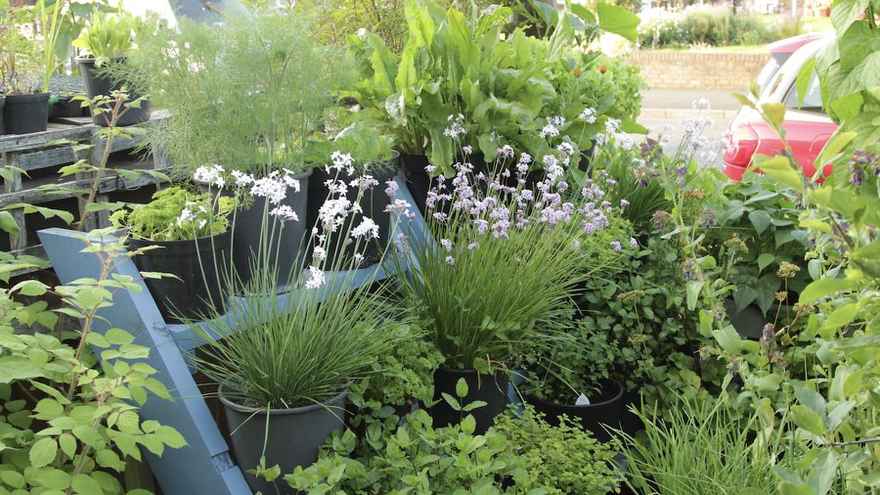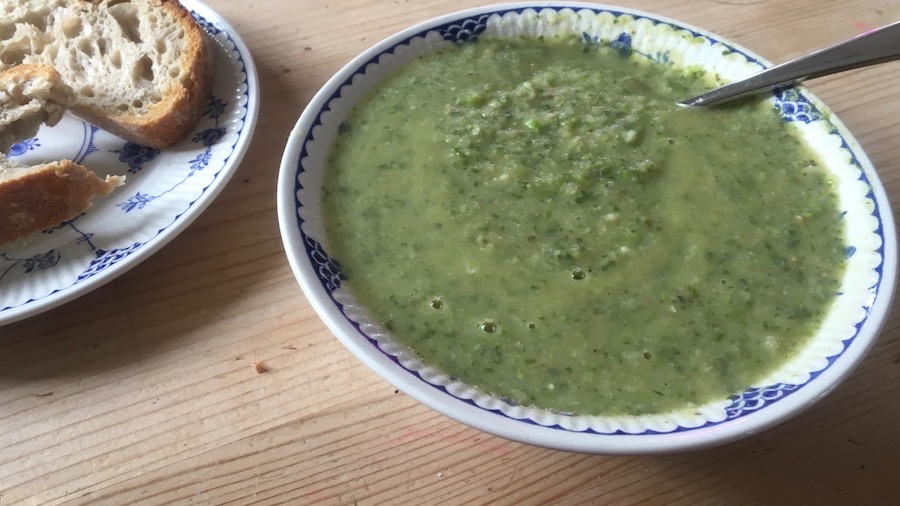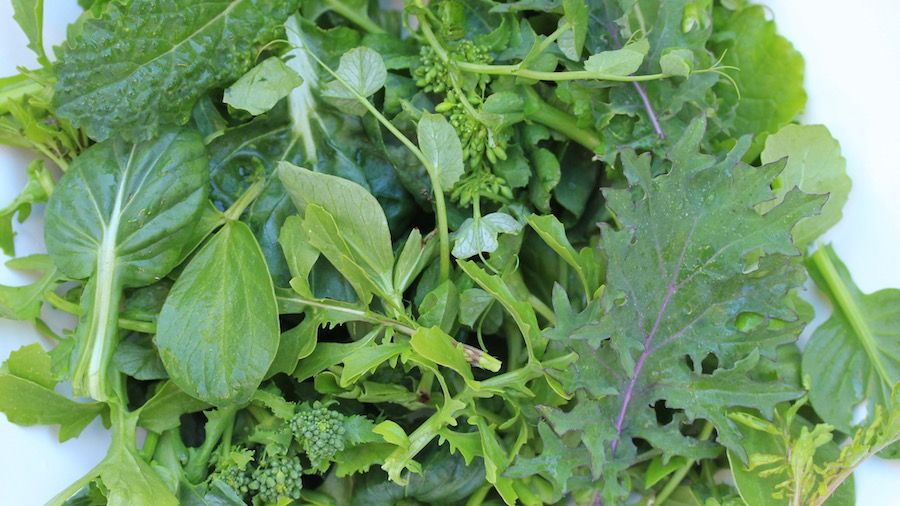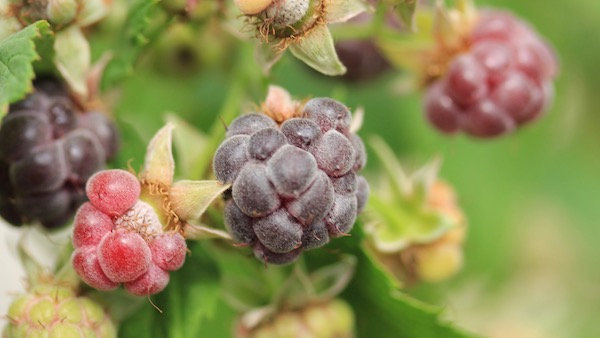Save Money: can container growing cut your grocery bill?

Can growing food in small spaces and containers save you money? Or is it as expensive to grow your own as to buy food from the shops? The answer depends on what you grow and how you grow it. It's difficult (although not impossible) to grow staple crops like carrots, potatoes or cabbages for much less than supermarket prices. But, by growing your own, you can eat a much better diet at a fraction of the cost. The secret is to focus on high value crops like herbs, microgreens, mixed salad leaves, soft fruit and chillies.
1. Herbs
From a money saving perspective, few crops can beat herbs. As well as being expensive to buy, you can use herbs to transform staple, low cost foods like rice or potatoes into something delicious and nutritious. Most herbs are also easy to grow and productive in containers.
What sort of savings are possible?
To give an example, in the last seven days alone, I've picked a variety of herbs from my Newcastle container garden, including 265g mint. At 70 pence for 30g in UK supermarkets, this mint alone would have cost £6.20. The cost to grow it was negligible - as it all comes from one mint plant I bought for 50p five years ago! I never would have spent £6.20 on mint in a week - but it's great to have. I've used it to transform a pea soup, to make a vibrant and very minty raita, and to knock up a pea, mint and yoghurt pasta dish. I've also added it to salads, new potatoes, kid's smoothies and used it to make mint tea.

Herbs can help you cook delicious food with simple ingredients. This dried pea soup was transformed with lashings of fresh mint leaves.
To give you another example, when I had a small balcony in London, I picked the equivalent of 165 packs of herbs from it one year.
Low cost ways to grow herbs
Because most herbs are perennial (last year after year), you only need to buy one plant for an ongoing supply. You can even grow most herbs for free from cuttings (like rosemary, sage, Vietnamese coriander) or by dividing them (mint, oregano, chives). If you can find a friend or community garden to give you cuttings, this is a rewarding way to grow your herb garden. Another low cost way to get herbs is to buy supermarket herbs and move them to larger pots. This works particularly well for basil, mint and parsley. And some herbs will grow fine from the seeds sold in spice packs for cooking, including coriander, fennel, dill, fenugreek, and basil (available in some Asian stores).
2. Microgreens
Microgreens are hard to find in the shops and usually expensive if you do. Many can be grown at low cost from pulses and seeds sold in shops for cooking, including pea and fava shoots, coriander, mustard, haloon (from Asian stores - tastes like cress), and chick peas. By sowing them thickly you can grow a lot in a small space. They are highly nutritious and also very delicious. By growing your own, you can eat restaurant quality ingredients for pennies rather than pounds.

Many microgreens can be grown from spice seeds. Asian shops often sell basil seed in spice packs - an ultra low cost way to grow a luxury ingredient: micro basil.
3. Mixed salads
Mixed salad bags are expensive to buy. They are also prone to go limp and tasteless quickly. The flavour of freshly picked homegrown salad is a revelation. For a small investment in a few packs of seeds, you'll be able to grow enough leaves to be able to pick a salad every day. You'll also be able to eat a much wider variety of different leaves - and save a fortune.

Many, many bowls of mixed salad like this can be grown from a few packs of seeds.
4. Soft fruit
If you have space for a few larger pots, soft fruit like raspberries (try variety Raspberry Purple Glen Coe), blackberries, strawberries and Chilean guava do well in containers. Soft fruit is expensive in the shops. And it's easily wasted as it goes off so quickly after buying. Getting soft fruit plants is a bit more of an investment (unless you can get blackcurrant cuttings or strawberry runners for free) - and it will probably be two or three years before you recoup that. But after that, you'll have a valuable crop on your doorstep every year.

Soft fruit is expensive and doesn't transport well - so it makes sense to grow it on your doorstep.
5. Chillies
If you have a sunny space and like chillies, they make a fantastic choice. One plant in a five or ten litre container can, if it is happy, produce literally hundreds of chillies. As chillies in the supermarket cost 10 - 15 pence each in the UK, one plant can give you £10 - £30 of chillies. And they will probably have much more flavour! The other benefit of chillies is that any surplus can easily be frozen, dried or pickled. So being self-sufficient in chillies all year is achievable with just a few plants - depending on how many chillies you eat.

Chillies yield well and you can grow many wonderful varieties unavailable in the shops. If you want to eat lots of high quality chillies on a budget, growing your own is a good option.
Other costs
Of course, as well as buying plants, there are other costs associated with growing food in containers. These include the containers, the compost, and fertiliser. How much you spend on these is as long as a bit of string. But it IS possible to create a container garden at very low cost - for example by using recycled containers and home made fertilisers. You can see how much my London Balcony cost to build and run here. Also look out for the Vertical Veg guide on Growing for Free, coming soon. Then of course there is the cost your time. If you factor that in, it may be hard to save anything by growing. But, if growing is also your hobby - and you just count the costs of the things you have to buy - then you can make significant savings.
How much can you save?
I estimate you can grow the most of the crops listed above for between 50% and 90% less than they'd cost you to buy (these are rough figures as it so much depends on how you grow). As these are all healthy and delicious foods, it really does mean that you can eat better for much less by growing some of your own.
Your turn
Do you grow any crops that you wouldn't normally buy because of the price? Do you find growing your own saves you any money? Is saving money a motivation in your growing? I'd love to hear your thoughts in the comments.

6 comments
Leave a comment